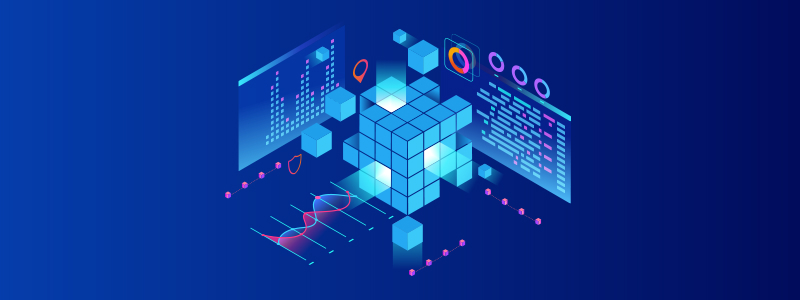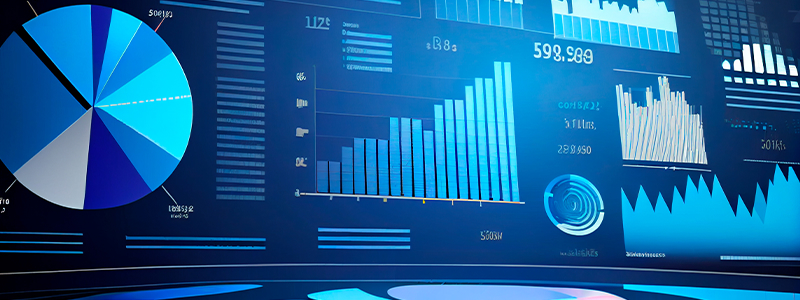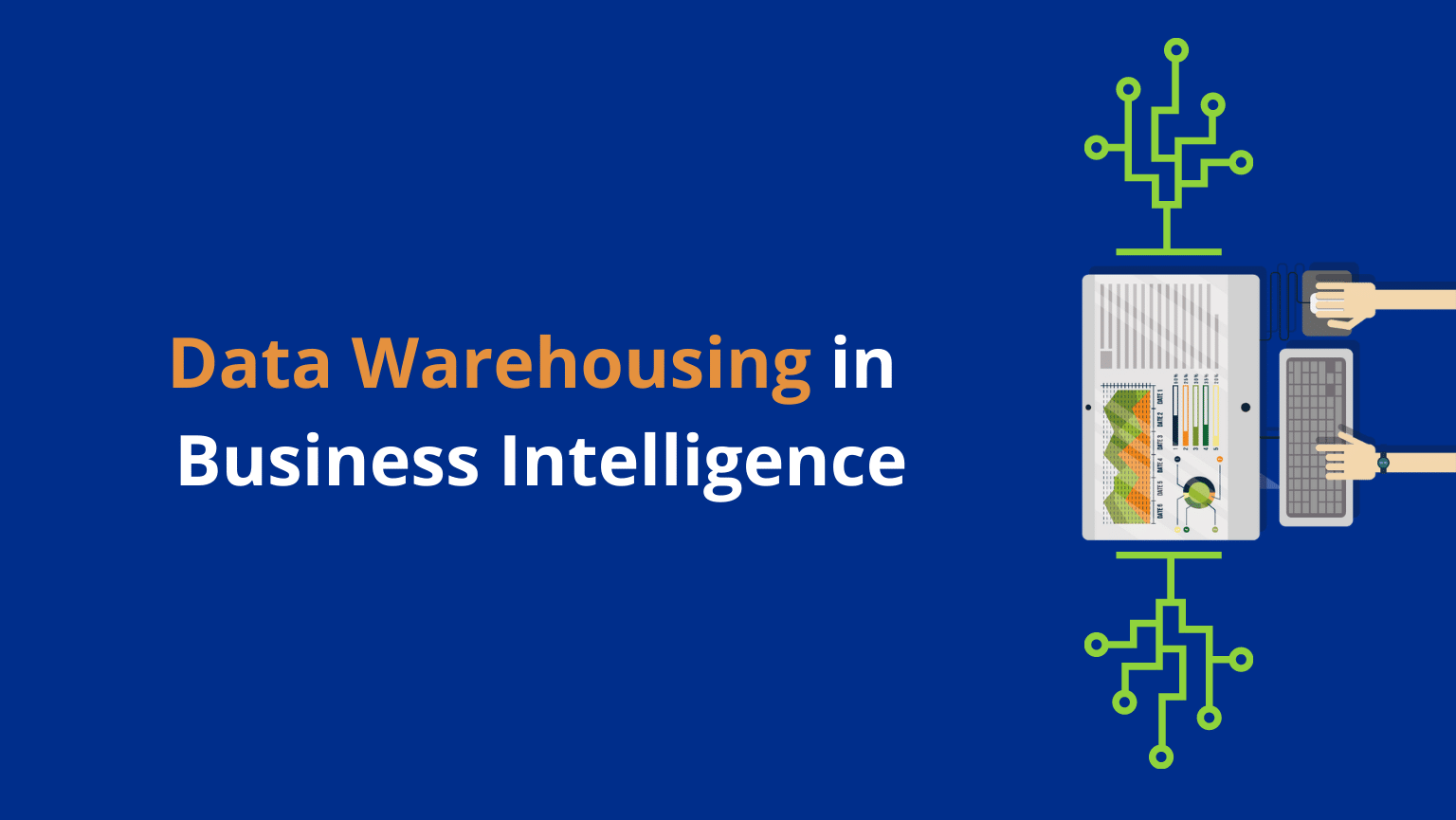
What is Business Analytics? Definition, Benefits & Challenges
What is Business Analytics?
Business analytics is analyzing data to find insights that inform business decisions. Fundamentally, it involves applying data analytics tools and techniques to a business setting to simplify decision-making and improve business outcomes. Often shortened to BA, business analytics includes:
- Collecting data
- Applying statistical methods
- Analyzing data
- Sharing the results with stakeholders
With the right tools and techniques, enterprises can turn raw data into actionable insights, driving strategic decision-making and sustainable growth. For example, business leaders can leverage customer behavior data to understand their target audience better. They can also use data to optimize processes, and predict future outcomes. These capabilities are crucial for staying competitive and agile in today’s data-driven economy.
How Business Analytics Impacts Business Decisions
Traditionally, organizations made choices based on experience or intuition. Business analytics replaces this guesswork with a data-driven approach. Collecting and analyzing vast amounts of information enables businesses to uncover potentially important information, like hidden patterns, customer preferences, and market trends.
Moreover, business data analytics enables companies to personalize marketing strategies and refine product offerings based on customer preferences, fostering stronger customer relationships and loyalty.
There are many types of business analytics. Predictive analytics, for example, enables businesses to anticipate trends and risks, enabling proactive decision-making and strategic planning. Using historical data and statistical modeling techniques allows companies to forecast demand, identify emerging opportunities, and mitigate potential threats ahead of time. This proactive approach minimizes risks and positions businesses to capitalize on emerging trends.
Implementing Business Analytics: A Step-by-Step Guide
Business analytics involves a series of steps to transform unstructured, raw data into cohesive insights that guide business decisions. Here’s how it works:
Data Collection
Data collection is the first step where businesses gather information from various sources, such as sales records, customer databases, social media, market research, and public data sets. The aim is to collect comprehensive and relevant data that will provide a solid base for analysis.
Data Cleaning
Once the data is collected, the next step is to clean it. Data cleaning ensures that the data is accurate and usable. This step involves using business analytics tools for:
- Removing Duplicates: Identifying and eliminating repeated entries to avoid skewed results.
- Correcting Errors: Fixing inaccuracies in data, such as typographical errors, incorrect entries, and inconsistencies.
- Filling Missing Values: Addressing gaps in data by filling in missing information through methods like mean substitution, regression imputation, or using data from similar entries.
- Standardizing Data: Ensuring data is consistent, such as using the same date format or unit of measurement across the dataset.
Clean data is crucial because it ensures that the analysis is reliable and accurate, leading to valid insights.
Data Analysis
With clean and organized data, the next step is to analyze it to extract insights and patterns. Data analysis can be broken down into two main types:
- Descriptive Analysis: Descriptive analysis summarizes the main features of the data. It uses statistical techniques to describe the basic characteristics of the data, such as mean, median, mode, standard deviation, and frequency distributions. The aim is to provide a clear understanding of what has happened in the past by transforming raw data into meaningful summaries and visualizations.
- Predictive Analysis: Predictive analysis goes further by using historical data to forecast future events. It employs regression analysis, time series analysis, and machine learning models to predict future outcomes. Predictive analysis helps businesses forecast sales, anticipate customer behavior, and identify potential risks, allowing them to make proactive decisions.
Data Visualization
Once the analysis is complete, the results are interpreted to generate findings relevant to the business. Data visualization presents these findings in a clear and understandable format:
- Creating Visuals: Representing analysis results with charts, graphs, and dashboards. Common visualizations include bar charts, line graphs, pie charts, heat maps, and scatter plots.
- Storytelling with Data: Transforming complex analysis results into clear, actionable visuals that tell a compelling story. Effective visualizations help stakeholders quickly grasp key trends and make informed decisions.
Through these steps, business analytics helps organizations leverage data effectively, empowering stakeholders to make informed decisions and achieve sustainable growth.

Business Intelligence (BI) vs. Business Analytics
Business intelligence (BI) and business analytics are related but distinct disciplines, often confusing people due to their overlapping functions:
Business Intelligence covers all processes and tools used to gather, store, analyze, and present data. It examines historical and current data to understand past performance and operational trends. BI answers questions like “What happened?” and “How did it happen?” It helps organizations monitor key metrics, create reports, and visualize data through dashboards to support day-to-day decision-making.
Business Analytics is a specialized part of BI that goes beyond historical analysis. It uses advanced methods such as data mining, statistical modeling, and machine learning to dig deeper into data. Business analytics aims to answer the question, “Why is this happening?” to understand current trends and predict future outcomes. It helps businesses make strategic decisions, anticipate market changes, and optimize processes to stay competitive.
BI focuses on understanding past and current data for operational insights, while business analytics leverages advanced techniques to forecast future scenarios and guide data-driven decision-making.
Key Benefits of Business Analytics

Business analytics offers significant advantages to organizations across various industries, including retail, technology, healthcare, and logistics. Some key benefits include:
- Informed Decision Making: Business analytics enables organizations to base decisions on data-driven insights instead of intuition alone.
For example, Walmart utilizes business analytics to optimize its inventory management and pricing strategies. The analysis of sales data, customer demographics, and regional trends allows Walmart to adjust inventory levels and pricing strategies for various products across its stores. This data-driven approach ensures that Walmart meets customer demand efficiently and maximizes profitability.
- Predictive Insights: Business analytics employs advanced techniques like predictive modeling and machine learning to predict trends and outcomes.
For instance, Netflix leverages business analytics to enhance its content recommendation system. It employs techniques to analyze viewing history, user preferences, and engagement metrics to predict which shows or movies a user is likely to enjoy. This personalized recommendation system enhances user satisfaction, increases viewer engagement, and reduces churn rates, contributing to Netflix’s market leadership in the streaming industry.
- Operational Efficiency: Business analytics improves efficiency by enabling business leaders to streamline workflows, reduce costs, and improve productivity.
For example, UPS (United Parcel Service) has integrated analytics to transform its traditional logistics processes into a more flexible and agile approach. The company evaluates package volume, delivery locations, and traffic patterns to optimize routes, reduce fuel consumption, and enhance service efficiency. This data-driven strategy enables UPS to fulfill customer needs, adapt to market changes, and make informed decisions throughout the supply chain.
Overcoming Challenges in Business Analytics
Implementing business analytics can greatly improve decision-making and efficiency, but it comes with challenges. Addressing them is crucial for maximizing the benefits of business analytics. Below are a few common challenges and strategies for overcoming them.
- Data Quality and Integration
Ensuring data accuracy, consistency, and integration from diverse sources is a primary challenge when analyzing business data. Leveraging a robust company data API can facilitate the seamless aggregation of data from various internal platforms, enhancing the reliability and comprehensiveness of the dataset. Organizations also struggle to harmonize disparate datasets and establish a single source of truth. Implementing robust data governance frameworks and quality assurance processes is essential to address this. Organizations can enhance data reliability and consistency across all operations by using data integration tools and enforcing standardized data formats. - Skills and Expertise
The shortage of skilled professionals proficient in data analysis, statistics, and business domain knowledge presents another significant challenge. Building internal expertise through investment in training programs and partnerships with educational institutions is crucial. Additionally, organizations can leverage external consultants or collaborate with specialized firms to fill skill gaps and ensure they have the necessary talent to analyze and interpret data effectively. - Cost and ROI
Organizations must consider costs and understand the return on investment (ROI) from business analytics efforts. Implementing and maintaining business analytics tools and infrastructure can be expensive. To address this, organizations should conduct thorough cost-benefit analyses before investing. Defining clear metrics and key performance indicators aligned with business objectives helps measure the impact of these initiatives on revenue, cost savings, and operational efficiency.
Business Analytics Use Cases

Some notable use cases that demonstrate the impact of business analytics across different sectors include:
Supply Chain Optimization
Companies leverage analytics to optimize inventory management, logistics, and demand forecasting, ensuring products are available at the right place and time while minimizing costs. By identifying bottlenecks in the supply chain and integrating solutions like grocery inventory management software, businesses can negotiate better with suppliers, improve resource allocation, and enhance overall operational efficiency.
Fraud Detection and Prevention
Financial institutions use business analytics to detect and prevent fraudulent activities. Analyzing transaction patterns and customer behavior enables organizations to identify anomalies that could indicate fraud, enabling timely detection and response. Advanced techniques, like anomaly detection and predictive modeling, can help reduce financial losses and maintain customer trust.
Marketing Campaign Optimization
Business analytics helps organizations refine their marketing strategies by analyzing customer data. Understanding customer demographics, preferences, and behavior patterns means companies can optimize marketing campaigns to effectively target specific audiences. Real-time analytics enable marketers to adjust strategies promptly based on campaign performance metrics, ensuring efficient resource allocation and maximizing return on marketing investment.
Human Resources and Talent Management
Business analytics enhances talent management and employee satisfaction within organizations. Organizations can implement initiatives that improve workplace culture, productivity, and retention by analyzing employee feedback and performance data. Data-driven insights facilitate strategic workforce planning, enabling HR departments to predict staffing needs and optimize recruitment processes.
Business Analytics Tools and Key Considerations
Businesses gather data from multiple sources, including customer interactions and operational processes. Without the right tools to analyze this data, its potential remains untapped. Business analytics tools help uncover valuable patterns and correlations, enabling informed decision-making.
Investing in a business analytics tool is crucial for organizations to effectively make sense of their data. When choosing a business analytics tool, consider the following factors:
- Business Needs and Objectives: Align the tool’s capabilities with specific business goals, such as improving customer satisfaction, optimizing resource allocation, or enhancing product offerings.
- Ease of Use and Accessibility: Ensure the tool is user-friendly and accessible to technical and non-technical users. Look for intuitive interfaces and self-service capabilities to empower users across the organization.
- Integration with Existing Systems: Evaluate how well the tool integrates with your current data infrastructure, including compatibility with data sources, databases, and IT systems.
- Analytical Capabilities: Assess the tool’s ability to perform descriptive analytics for historical insights, predictive analytics for forecasting, and prescriptive analytics for actionable recommendations.
- Scalability and Performance: Consider the tool’s scalability to handle large datasets and its performance in processing real-time data analysis and complex queries.
- Cost and ROI: Calculate the total cost of ownership, including initial setup costs, licensing fees, maintenance, and training. Evaluate the potential ROI in terms of improved decision-making and operational efficiencies.
- Security and Compliance: Ensure the tool meets industry standards and requirements for data security, privacy, and compliance. Look for features like encryption and access controls.
- Vendor Reputation and Roadmap: Research the vendor’s reputation in the industry and review their product roadmap for future enhancements and updates that align with your organization’s evolving needs.
Conclusion
With artificial intelligence and machine learning advancements, analytics capabilities are expected to become more sophisticated. This evolution will likely empower businesses to delve deeper into analytics, allowing them to foresee trends and optimize strategies. Moreover, as data volumes grow exponentially, the ability to derive meaningful insights will be crucial for maintaining competitiveness and driving sustainable growth.
Therefore, investing in comprehensive data management solutions is crucial. Astera provides an end-to-end data management platform with data extraction, integration, transformation, and warehousing capabilities. The solution integrates seamlessly with leading BI and analytics tools like Power BI and Tableau, enabling businesses to derive actionable insights, enhance operational efficiency, and drive strategic initiatives.
Unlock actionable insights with Astera’s suite of solutions – download the 14-day free trial today!




